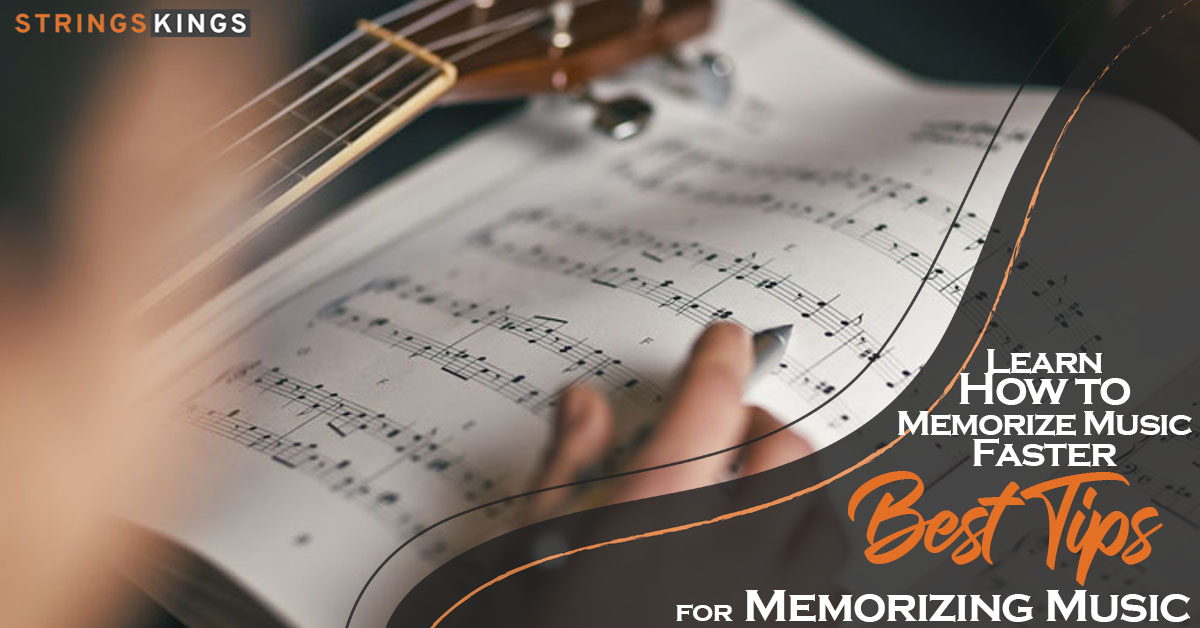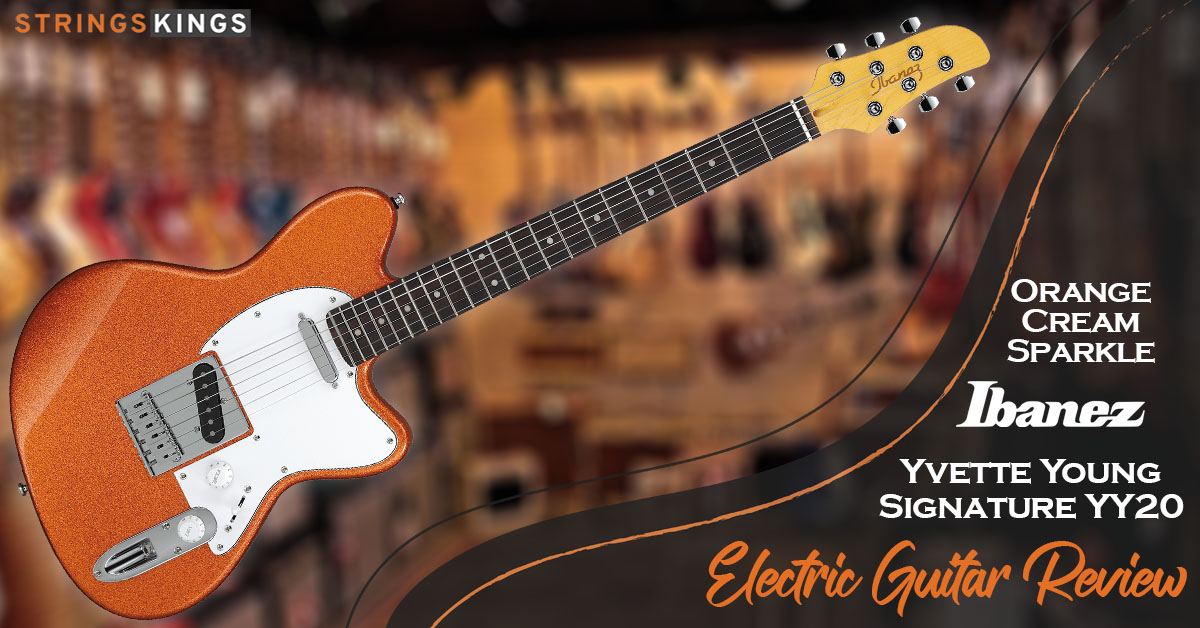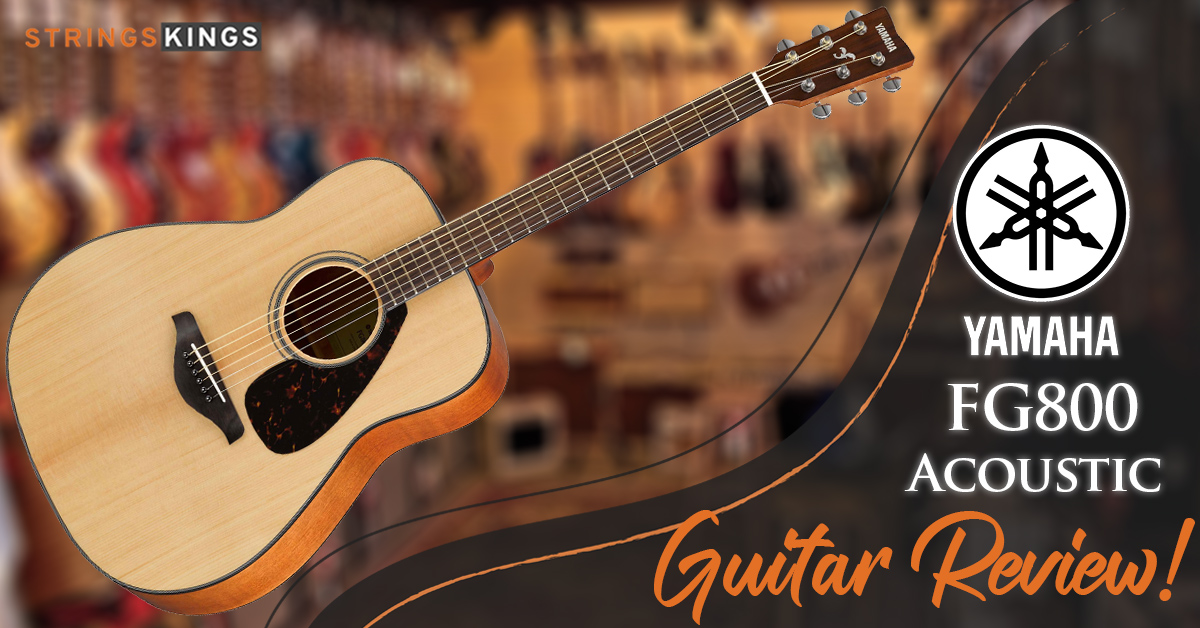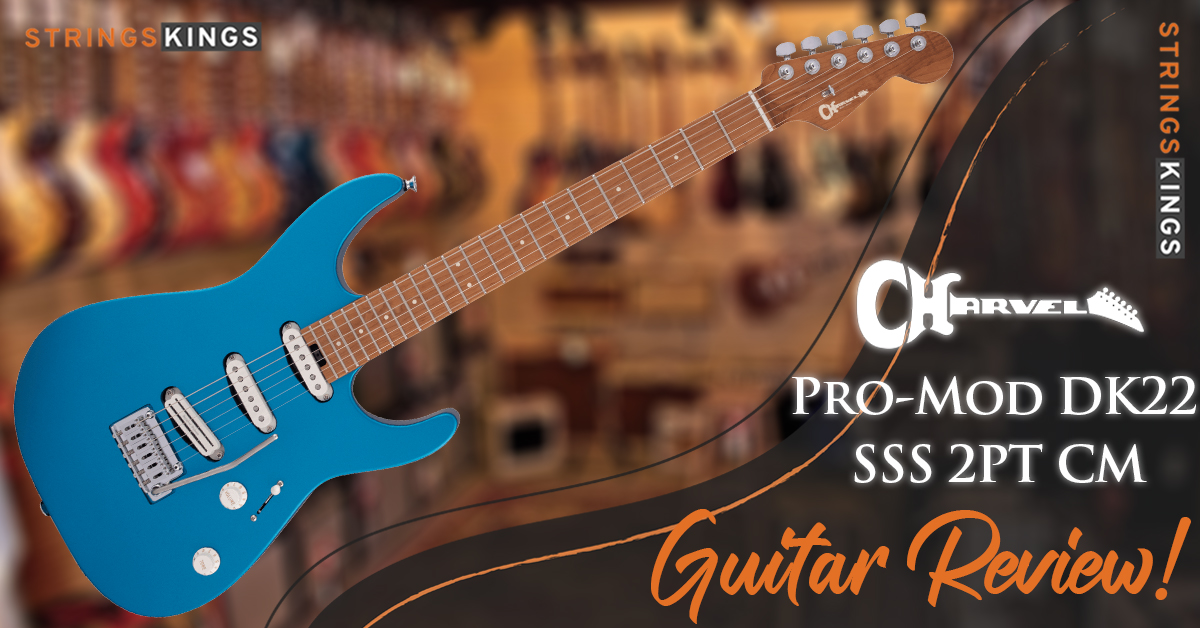Table of Contents
What is a Delay Pedal?
Introduction
In the world of guitar effects, the delay pedal is one of the most commonly found pedals. You can add extra flair to your sound by playing around with a single effect, such as the delay pedal, without having to learn a whole lot of additional skills or scales.
There are many delay pedals on the market that allow you to control the basic settings like delay time, repeat, and feedback. This article will provide you with an overview of what this pedal is and how to properly use it if you are interested in adding some extra flair to your sound without having to learn a new playing style.
In the same way that overdrive pedals and distortion pedals are used for effects, delay pedals also serve that purpose. The delay pedal works by playing back the note that you have played several times until it becomes inaudible.
Depending on how long you would like the delay to play, that note will become inaudible over a certain amount of time.
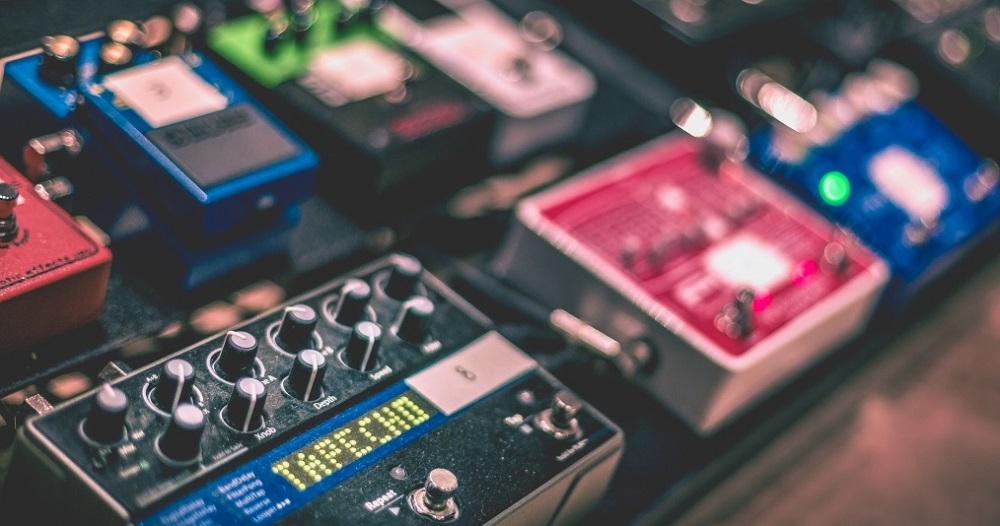
What is Analog Delay?
Analog delay differs from digital delay in that analog signals are continuous sine waves. The fact that they are entirely natural indicates that they are not artificial. Acoustic guitars and vinyl records produce this type of signal.
Compared to digital recording, analog recording is more accurate and pure. Compared to digital recordings, analog tapes are “warmer” and contain minor imperfections that give them a nostalgic feel. When it comes to pedals, analog pedals are “warmer” and “sleeker.” Analog delays give a richer tone, but there are fewer options available to the guitarist.
It is unlikely that they will last much longer, but they are excellent for vintage tones and slight delay effects. In the early days of the market, Electro-Memory Harmonix‘s Man was one of the first products available. In terms of its market impact, it was the first time a delay unit was available in a “compact-sized” pedal format.
As analog delays are repeated, they tend to grow warmer, darker, and more diffuse (separated) with each level, imparting a highly distinctive sound quality.
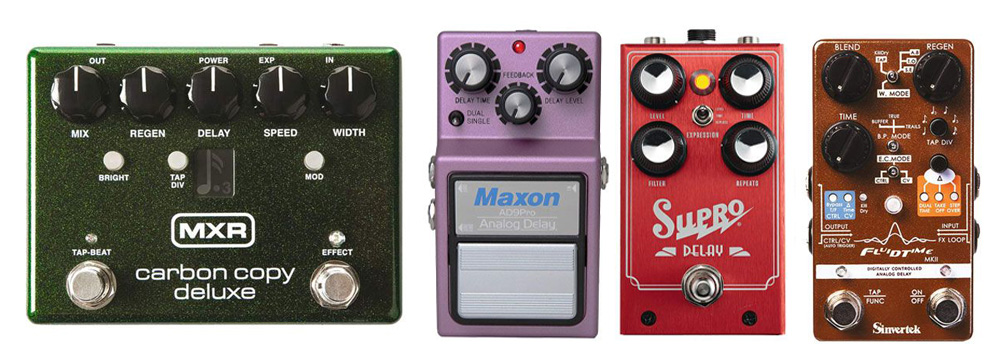
What is Digital Delay?
Digital delay pedals utilize digital signal processing to create their effects, so they have greater flexibility in regard to how the sound they produce can be artificially “colored” as well as how long or short the delay time can be.
In the case of digital pedals, and in particular digital delays, there will be several parameters to tweak, and the delay will be unlimited in duration. As a result of the use of digital signal processing (DSP) processors, digital pedals produce the desired effect. Upon entering the pedal, your input is converted to digital form, and upon exiting, it is converted back to analog form.
Depending on the delay pedal, the accuracy of the analog-to-digital-to-analog conversion (ADA) can vary. To conserve as much of your input signal as possible, you would prefer a high conversion rate.
A digital recording in a studio will be unable to reproduce the signal perfectly, but it will be clear and sharp. As a result, the audio will not have the warmth and minor defects associated with analog recordings.
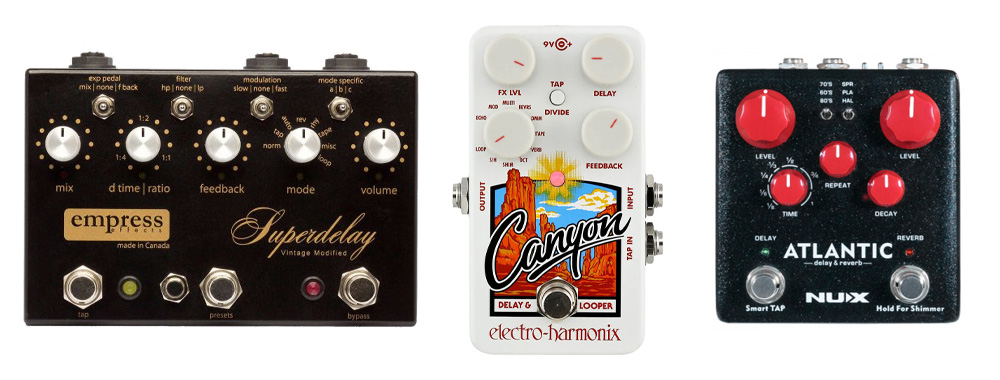
What is a Tap Tempo Delay Pedal?
You typically use delay pedals to give your guitar sound a bit more depth and dimension. In terms of delay pedals, there are a variety of types, ranging from vintage-inspired sounds utilizing tape delay machines to DSP-based processing for unique rhythmic sounds.
Most delay pedals come with a “tap tempo” switch or button that enables you to sync the delay time to other sources, such as your bandmate or your computer.
By pressing a button, footswitch, or other control several times in succession at the desired tempo, the user can manually enter or set the time or rate for a time-based effect (such as delay, tremolo, or others). Instead of entering a number or turning a knob, this function allows the user to manually enter or set the time or rate. To quickly synchronize delay and modulation times with a song’s tempo, tap tempo is often used.
Tap tempo can be applied to a wide range of pedals, however, they usually feature time and modulation effects such as delay and tremolo. A tap tempo function is available on some reverb pedals, and we have even seen a distortion pedal with a tap tempo feature.
Due to the fact that delay pedals are time-based effects, it is most popular for users to use a tap tempo to control the time in a song. You should be aware that not all delay or modulation pedals are equipped with an external tap tempo switch, so be sure to check before buying if your pedal supports this feature.
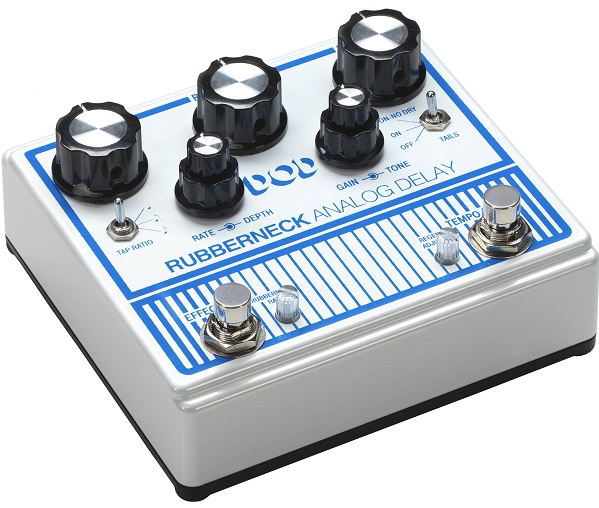
How To Use Delay Pedal?
If you listen closely, you can often hear the sound of a delay pedal in clean guitar parts and in guitar solos, regardless of the genre. The combination of reverb and delay is often used by musicians to create the illusion that they are playing in a large, empty space.
The delay pedal may be enjoyed by some musicians only in a subtle manner. Nevertheless, there are some guitarists who enjoy taking advantage of the benefits of delay pedals.
The following example illustrates a common technique that many musicians use with their delay pedals: by picking out a note on a clean channel and adding delay to the mix, your sounds will have a profound depth. Especially if you wish to stand out from any vocals, this will make your sound much more interesting and complex.
You can also use delay pedals to create fascinating harmony effects, which is another technique you may find being used with delay pedals.
By using your delay pedal to emphasize your tone, you can play a singular note, and while the delay pedal repeats that note, you can play harmonies over the singular note. In addition to enhancing your sound, this can really make your solo stand out from the other musicians.
How Delay Pedal Works?
Depending on the model and make of the delay pedal, there are a number of possible settings. Below you will be able to find the most common settings on a delay pedal.
Effect level: The amount of delay signal that will pass through the chain of your signal processing system. An unprocessed signal is typically referred to as “dry” and a processed signal as “wet.”
You will receive a fully wet signal if you turn the Effect knob all the way up. In addition to creating trippy effects, such a technique could easily overwhelm the structure of the song you are playing. As a result, it is recommended that the Effect knob be kept in a reasonable setting.
Feedback: Most delay pedals are capable of returning delayed sounds into the signal chain, where they can be reechoed many times over. If you increase the Feedback knob, you will see cascades of delay emanating from your amplifier.
It is important to use this parameter with caution once again. A delay tone without feedback is tedious, but too much feedback will quickly turn your output into pure chaos-great for ambient sound collages, but not useful when playing with other musicians.
Time: This parameter determines how long your audio performance will be played back before it is played back by the pedal. It is common in old-school country music and surf rock to use short delay times (around 50 milliseconds) to create the instant “slapback” effect.
In the case of long delay times (around 800 milliseconds), a line of music can almost create a canon effect, a few beats later, in which a line of music is repeated on top of itself.
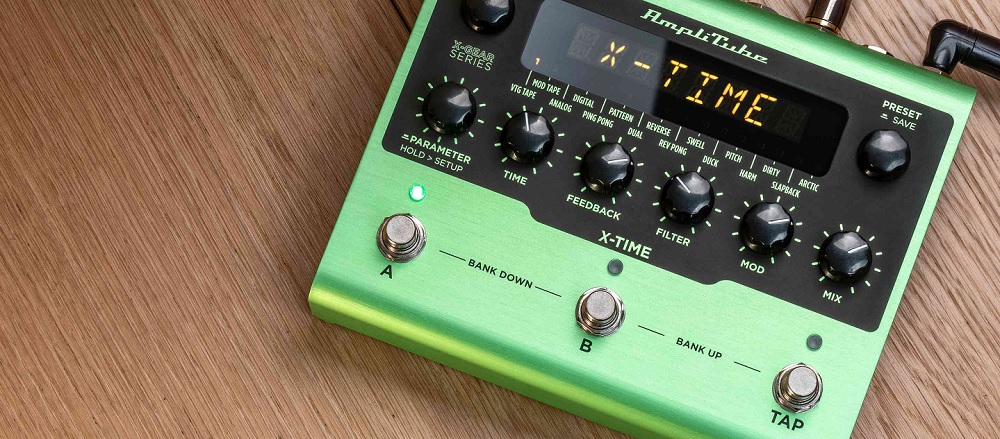
Conclusion
To summarize and clarify; this article is not one on showing you which delay pedal is best for you. If you want to check that, follow this link for brief reviews on what we think are really good delay pedals.
Our goal for this article was to show and explain what is delay pedal, answer some basic questions that are of benefit to all musicians and give you the idea of what is this pedal. We believe now it is more clear to you and you understood the usage and performance of a delay pedal in order to use its potential to the maximum.
If you are having any additional questions about this topic, please let us know in the comment section below and we will be more than happy to answer to all your needs!

